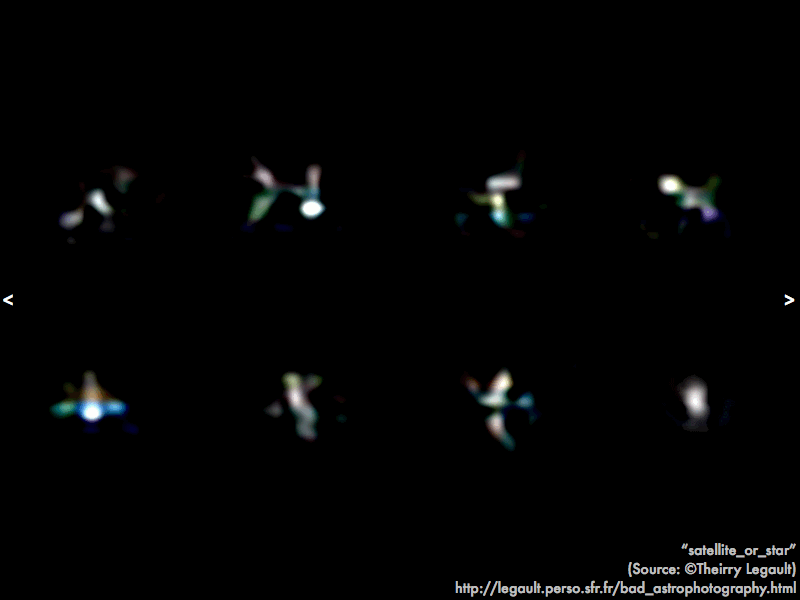Cuesta College, San Luis Obispo, CA
Students have a weekly online reading assignment (hosted by SurveyMonkey.com), where they answer questions based on reading their textbook, material covered in previous lectures, opinion questions, and/or asking (anonymous) questions or making (anonymous) comments. Full credit is given for completing the online reading assignment before next week's lecture, regardless if whether their answers are correct/incorrect. Selected results/questions/comments are addressed by the instructor at the start of the following lecture.
The following questions were asked on reading textbook chapters and previewing presentations on problems caused by the atmosphere for telescope observing, Earth, and the impacted worlds: the moon, and Mercury.

Selected/edited responses are given below.
Describe something you found interesting from the assigned textbook reading or presentation preview, and explain why this was personally interesting for you.
"That telescopes viewing infrared radiation must be cooled. I never suspected that the heat of the telescopes themselves, in basic terms, produced their own light pollution that made the image hard to see."
"The 'turkey/cornish hen effect'--it really was a great image and explanation of core temperatures of different-size planets."
"Adaptive optics was interesting me, learning how telescopes can be altered to in a sense, to get rid of the 'atmosphere' to see space more clearly."
"The large-impact hypothesis that the moon formed from debris of a collision between Earth and some other large object in space."
"That tturbulence in the atmosphere that makes stars look like they're twinkling in the night sky."
Describe something you found confusing from the assigned textbook reading or presentation preview, and explain why this was personally confusing for you.
"During outgassing how is water released from rock?"
"How Earth's deep layer of dense rock can slowly flow like a liquid."
"How active optics gets rid of atmospheric turbulence."
"The large impact hypothesis."
"The greenhouse effect, and how the ocean can absorb large amounts of carbon dioxide from the atmosphere."
 Stars to appear to "twinkle" in the night sky because of:
Stars to appear to "twinkle" in the night sky because of: "Turbulence in the Earth's atmosphere."
"Because we view them through moving air."
"I don't know."
A large modern optical telescope in outer space would have images with better __________ than a comparable ground-based telescope.
brightness. ****** [6] resolution. ************ [12] magnification. * [1] (None of the above choices.) * [1] (Two of the above choices.) *********** [11] (All of the above choices.) ******* [7] (Unsure/guessing/lost/help!) * [1]
Identify how carbon dioxide enters and how it is taken out of Earth's atmosphere.
(Only correct responses shown.)
Enters atmosphere from: volcanoes [54%]
Taken out of atmosphere by: oceans [59%]
Identify the oldest (longest ago) to the youngest (most recent) features on the moon.
(Only correct responses shown.)
Craters partially filled in with flat lava plains: oldest (formed longest ago) [38%]
Flat lava plains: middle [%37]
Craters on top of flat lava plains: youngest (formed most recently) [51%]
Identify the oldest (longest ago) to the youngest (most recent) features on Mercury.
(Only correct responses shown.)
Large crater basins: oldest (formed longest ago) [55%]
Lava-filled lowlands: middle [49%]
Long curving ridges: youngest (formed most recently) [59%]
Ask the instructor an anonymous question, or make a comment. Selected questions/comments may be discussed in class.
"Can you clarify how active optics rid of atmospheric turbulence?" (Yes.)
"The presentation on Earth and the greenhouse effect contained five uses of the word, 'subsequent.'"
"This class is sick as frick." (I don't know how to respond to that.)
"How do craters get filled with lava?" (If there is a large enough volcanic eruption, lava fills in everything.)
"How much did the telescope at the Bowen Observatory cost?" (The Meade LX200-ACF 14" f/10 telescope was purchased from a Cuesta College Foundation grant for approximately $6,000-7,000 about ten years ago.)


No comments:
Post a Comment